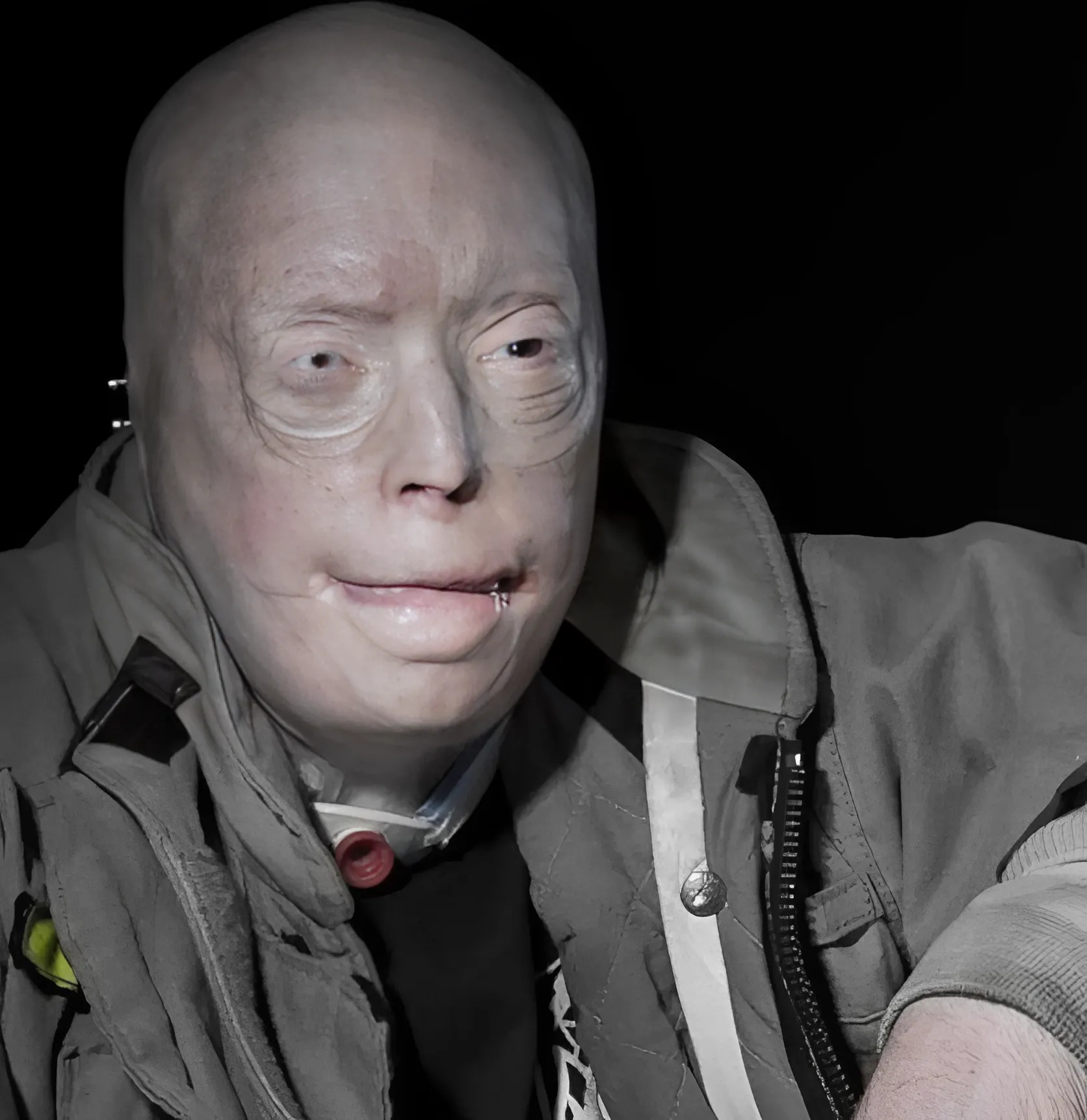Patrick Hardison never imagined his name would one day be known around the world. He wasn’t chasing fame or recognition. He was simply a firefighter from Mississippi — strong, devoted, and proud to serve his community. For years, he responded to emergency calls without hesitation, risking his life to help others. But in September 2001, everything changed in a split second.
That day, Patrick was called to a burning mobile home. It was supposed to be a standard rescue. But as he entered the blaze to search for anyone trapped inside, the ceiling suddenly collapsed. In an instant, fire engulfed his face. His gear offered little protection. He survived — barely — but his face was unrecognizable.
The injuries were devastating. Patrick lost his ears, lips, eyelids, and most of his nose. His entire face was severely burned, his skin scorched and tight like leather. To protect his eyes, doctors grafted skin from his thigh over them, effectively blinding him. He couldn’t blink. Couldn’t smile. Couldn’t show emotion. The man who once ran toward danger to save lives could barely recognize his own.
For months after the accident, he didn’t dare look in the mirror. And when he finally did — in November, through a tiny slit in his newly reconstructed eyelids — the shock was overwhelming. “What is that?” he whispered. “I can’t take this.” His reflection was unrecognizable, and the emotional pain was just beginning.
The years that followed were filled with suffering — physical, emotional, and deeply personal. His wife eventually left, unable to cope with the trauma. His children grew up while he remained in the shadows, fighting to survive. He wanted to be present — to cheer them on at baseball games, to attend school events — but every outing came with stares, whispers, and awkward silences. Children turned away in fear. Adults muttered and stared. He felt like a ghost of the man he once was.
Over the next 14 years, Patrick underwent more than 70 surgeries. Skin grafts. Reconstructions. Temporary fixes that barely made life manageable. He tried to reclaim a sense of normalcy, but the mirror never lied. He often said he looked like something out of a horror film — and in a world so focused on appearances, that reality made every day harder.
Then, a flicker of hope. A friend of Patrick’s shared his story with Dr. Eduardo Rodriguez, a renowned surgeon at NYU Langone Medical Center. Dr. Rodriguez had performed facial transplants before, but nothing of this scale. Still, he was moved by Patrick’s courage and knew he wanted to help.
In 2015, after months of planning and preparation, Rodriguez assembled a team of more than 100 medical specialists. What followed was the most extensive and complex face transplant ever performed at that time. The surgery lasted 26 hours. Patrick received not just a new face, but a second chance at life. The transplant included a new scalp, ears, nose, cheeks, chin, and — most incredibly — eyelids that could blink.
The procedure, estimated to cost around a million dollars, was entirely covered by the hospital. Patrick and his family didn’t pay a cent.
When he woke up, Patrick could see again. He could blink, smile, and breathe without discomfort. Slowly, he began stepping back into life. People no longer stared. He could walk into stores, attend his children’s events, and feel like himself again — not the man from the accident, but a man reborn through resilience and science.
Today, Patrick Hardison is building a new chapter. He bought a piece of land and is constructing his dream home. He’s also writing a book — not just about tragedy and transformation, but about hope, endurance, and the quiet strength it takes to keep going when everything you know has been taken from you. His journey is one of the most remarkable in medical history, but more than that, it’s a deeply human story about finding light after the darkest of days.






